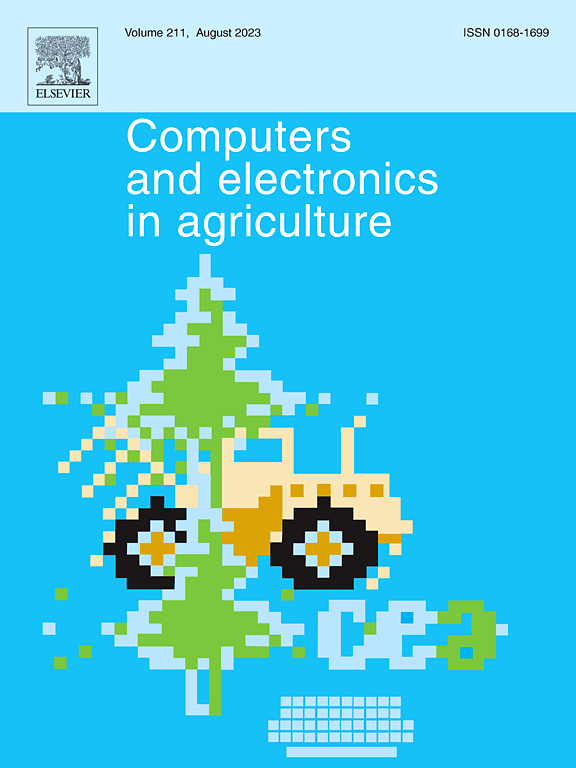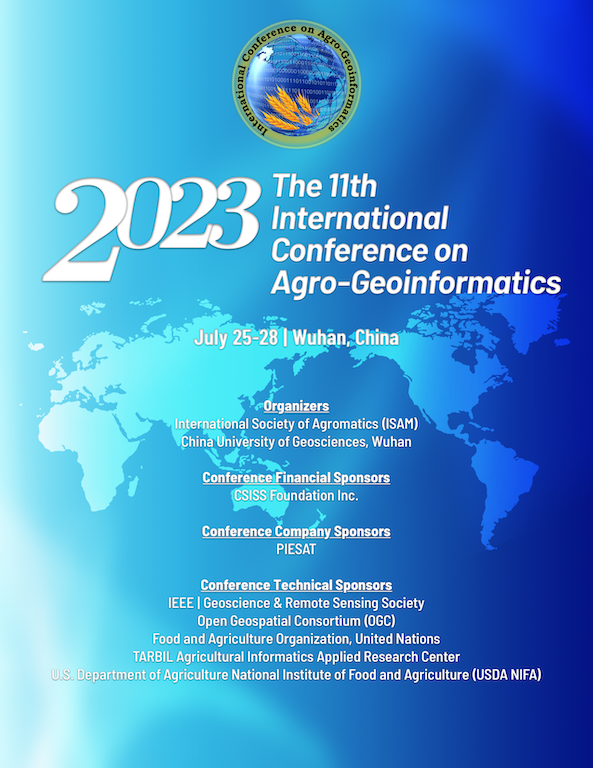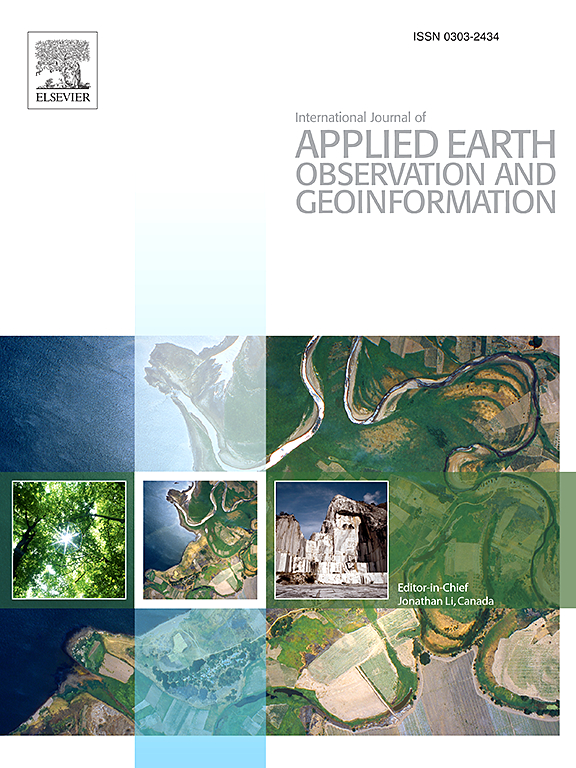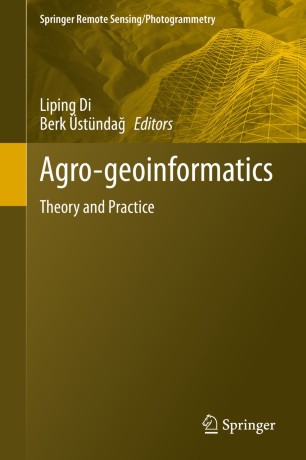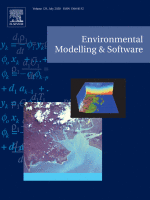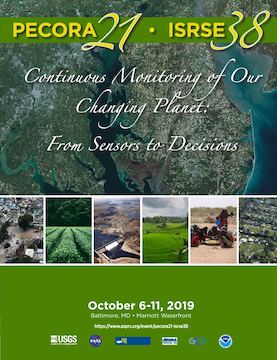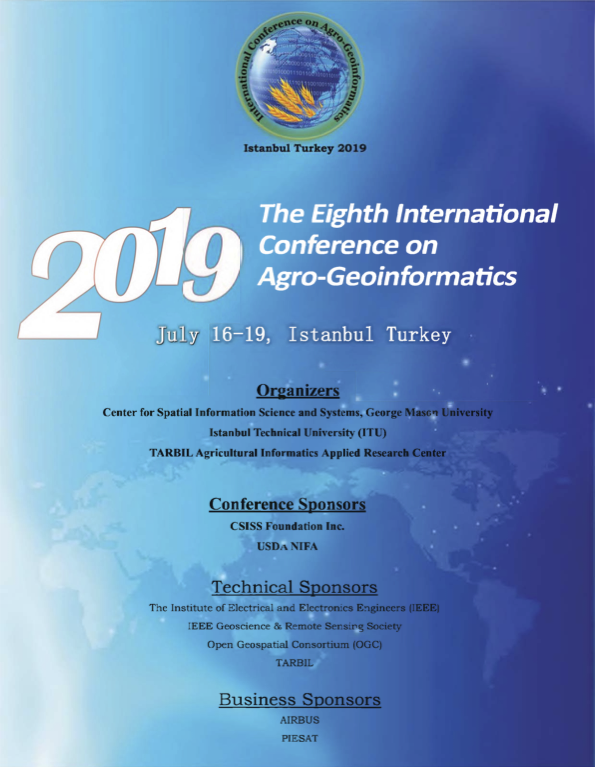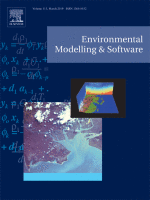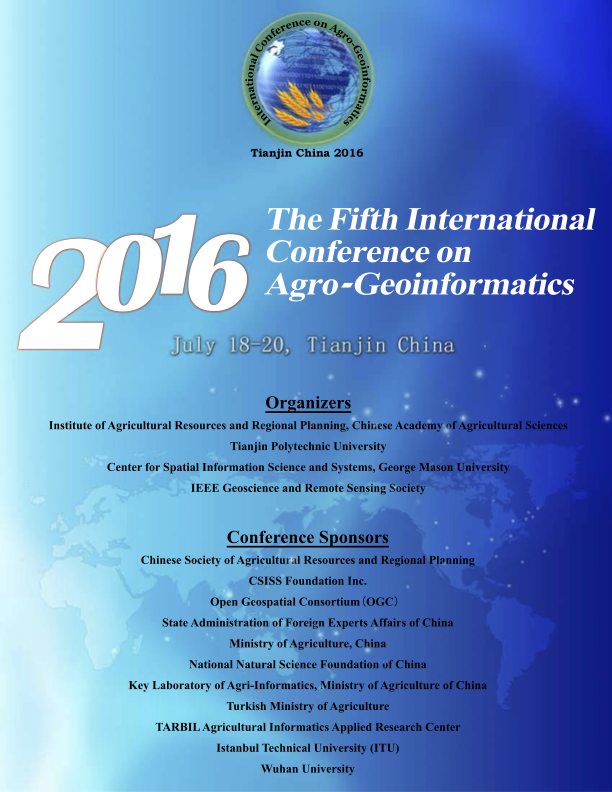Publication
* Full publication list and citations on Google Scholar.
Zhang, C., Di, L., Lin, L., Zhao, H., Li, H., Yang, A., Guo, Li., and Yang, Z., 2023. Cyberinformatics tool for in-season crop-specific land cover monitoring: Design, implementation, and applications of iCrop. Computers and Electronics in Agriculture, 213, 108199. doi: 10.1016/j.compag.2023.108199.
Full-text access: ScienceDirect
Zhang, C., Marfatia, P., Farhan, H., Di, L., Lin, L., Zhao, H., Li, H., Islam, M.D. and Yang, Z., 2023. Enhancing USDA NASS Cropland Data Layer with Segment Anything Model. The 11th International Conference on Agro-Geoinformatics. doi: 10.1109/Agro-Geoinformatics59224.2023.10233404.
Full-text access: ResearchGate, IEEE
Zhang, C., Yang, Z., Di, L., Yu, E.G., Zhang, B., Han, W, Lin, L., and Guo, L., 2022. Near-real-time MODIS-derived vegetation index data products and online services for CONUS based on NASA LANCE. Scientific Data, 9, 477. doi: 10.1038/s41597-022-01565-2.
Full-text access: Nature
Zhang, C., Di, L., Lin, L., Li, H., Guo, L., Yang, Z., Yu, E.G., Di, Y. and Yang, A., 2022. Towards automation of in-season crop type mapping using spatiotemporal crop information and remote sensing data. Agricultural Systems, 201, 103462. doi: 10.1016/j.agsy.2022.103462.
Full-text access: ScienceDirect
Zhang, C., Yang, Z., Zhao, H., Sun, Z., Di, L., Bindlish, R., Liu, P.W., Colliander, A., Mueller, R., Crow, W. and Reichle, R.H., 2022. Crop-CASMA: A web geoprocessing and map service based architecture and implementation for serving soil moisture and crop vegetation condition data over US Cropland. International Journal of Applied Earth Observation and Geoinformation, 112, 102902. doi: 10.1016/j.jag.2022.102902.
Full-text access: ScienceDirect
Zhang, C., Di, L., Hao, P., Yang, Z., Lin, L., Zhao, H. and Guo, L., 2021. Rapid in-season mapping of corn and soybeans using machine-learned trusted pixels from Cropland Data Layer. International Journal of Applied Earth Observation and Geoinformation, 102, 102374. doi: 10.1016/j.jag.2021.102374.
Full-text access: ScienceDirect
Zhang, C., Di, L., Yang, Z., Lin, L., Zhao, H. and Yu, E.G., 2021. An Overview of Agriculture Cyberinformatics Tools to Support USDA NASS Decision Making. The 9th International Conference on Agro-Geoinformatics. doi: 10.1109/Agro-Geoinformatics50104.2021.9530327.
Full-text access: ResearchGate, IEEE
Zhang, C., Yang, Z., Di, L., Lin, L., Hao, P. and Guo, L, 2021. Applying Machine Learning to Cropland Data Layer for Agro-Geoinformation Discovery. 2021 IEEE International Geoscience and Remote Sensing Symposium (IGARSS). doi: 10.1109/IGARSS47720.2021.9554628.
Full-text access: IEEE
Zhang, C. and Lin, L., 2021. Image Processing Methods in Agricultural Observation Systems. In: Di L., Üstündağ B. (eds) Agro-geoinformatics: Theory and Practice, Springer Remote Sensing/Photogrammetry. Springer, Cham. doi: 10.1007/978-3-030-66387-2_6.
Full-text access: Springer
Zhang, C., Di, L., Yang, Z., Lin, L. and Hao, P., 2020. AgKit4EE: A toolkit for agricultural land use modeling of the conterminous United States based on Google Earth Engine. Environmental Modelling & Software, 129, 104694. doi: 10.1016/j.envsoft.2020.104694.
Full-text access: ResearchGate, ScienceDirect
Zhang, C., Yang, Z., Di, L., Lin, L. and Hao, P., 2020. Refinement of Cropland Data Layer Using Machine Learning. The International Archives of Photogrammetry, Remote Sensing and Spatial Information Sciences, 42, pp. 161-164. doi: 10.5194/isprs-archives-XLII-3-W11-161-2020.
Full-text access: ResearchGate, ISPRS
Zhang, C., Di, L., Lin, L. and Guo, L., 2019. Machine-learned prediction of annual crop planting in the U.S. Corn Belt based on historical crop planting maps. Computers and Electronics in Agriculture, 166, 104989. doi: 10.1016/j.compag.2019.104989.
Full-text access: ResearchGate, ScienceDirect
Zhang, C., Di, L., Yang, Z., Lin, L., Yu, E.G., Yu, Z., Rahman, M.S. and Zhao, H., 2019. Cloud Environment for Disseminating NASS Cropland Data Layer. The 8th International Conference on Agro-Geoinformatics. doi: 10.1109/Agro-Geoinformatics.2019.8820465.
Full-text access: ResearchGate, IEEE
Zhang, C., Di, L., Lin, L. and Guo, L., 2019. Extracting Trusted Pixels from Historical Cropland Data Layer Using Crop Rotation Patterns: A Case Study in Nebraska, USA. The 8th International Conference on Agro-Geoinformatics. doi: 10.1109/Agro-Geoinformatics.2019.8820236.
Full-text access: ResearchGate, IEEE
Zhang, C., Di, L., Sun, Z., Lin, L., Yu, E.G. and Gaigalas, J., 2019. Exploring cloud-based Web Processing Service: A case study on the implementation of CMAQ as a Service. Environmental Modelling & Software, 113, pp. 29-41. doi: 10.1016/j.envsoft.2018.11.019.
Full-text access: ResearchGate, ScienceDirect
Zhang, C., Di, L., Sun, Z., Yu, E.G., Hu, L., Lin, L., Tang, J. and Rahman, M.S., 2017. Integrating OGC Web Processing Service with cloud computing environment for Earth Observation data. The 6th International Conference on Agro-Geoinformatics. doi: 10.1109/Agro-Geoinformatics.2017.8047065.
Full-text access: ResearchGate, IEEE
Zhang, C., Sun, Z., Heo, G., Di, L. and Lin, L., 2016. Developing a GeoPackage mobile app to support field operations in agriculture. The Fifth International Conference on Agro-Geoinformatics. doi: 10.1109/Agro-Geoinformatics.2016.7577656.
Full-text access: ResearchGate, IEEE
Zhang, C., Sun, Z., Heo, G., Di, L. and Lin, L., 2016. A GeoPackage implementation of common map API on Google Maps and OpenLayers to manipulate agricultural data on mobile devices. The Fifth International Conference on Agro-Geoinformatics. doi: 10.1109/Agro-Geoinformatics.2016.7577654.
Full-text access: ResearchGate, IEEE
